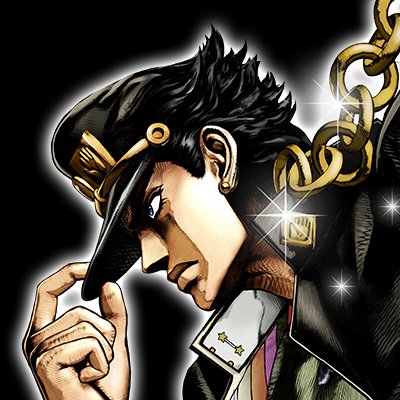Anime, JoJo's Bizarre Adventure
Exploring the Spectacle of Jojo’s Bizarre Musical Adventure

Exploring the intricate web of musical references woven into the fabric of “JoJo’s Bizarre Adventure” is like embarking on a thrilling puzzle. From Bob Dylan’s “Knocking on Heaven’s Door” to Pink Floyd’s “Shine On You Crazy Diamond,” and even The Rolling Stones’ album “Sticky Fingers” and Steely Dan’s “Aja,” these seemingly unrelated songs find their place within the pages of this iconic Japanese manga.
Authored and illustrated by Hirohiko Araki, “JoJo’s Bizarre Adventure” debuted in 1987 and has since become one of the longest-running manga series, captivating readers with its unconventional storytelling and visually striking art. It has garnered a massive following, spawning countless memes and cleverly hidden references that fans eagerly uncover.
To uncover a JoJo reference, one need only venture into the comment section of virtually any YouTube music video featuring songs from the ’60s to the ’80s. Without fail, you’ll stumble upon enthusiastic discussions about how a particular song is connected to JoJo’s Bizarre Adventure. These discussions might even delve into unconventional interpretations, like feeling compelled to open someone’s face and read them like a book—an inclination that truly embodies the bizarreness of the series.
Araki’s love for Western music shines through in his manga, with references scattered throughout the expansive universe he has created. Virtually every character in the series, especially those possessing unique abilities or engaging in epic battles akin to superheroes from the Marvel and DC universes, bears the names of songs, musicians, bands, or albums.
The homage to Western music is not limited to a select few artists but spans across various genres and eras. Notably, Araki has paid tribute to musicians like The Beatles, George Harrison, and iconic songs such as “Get Back” and “Come Together.” The depth of these musical references is truly astounding and a testament to Araki’s passion for intertwining music and storytelling.

Let’s begin our musical journey from the very start—the first part of “JoJo’s Bizarre Adventure,” known as “Phantom Blood.” Drawing inspiration from Bram Stoker’s “Dracula” and Victor Hugo’s “Les Misérables,” this part sets a distinct tone and atmosphere. It is here that we encounter the patriarch of the Joestar family, George Joestar I.
Interestingly, the first four generations of Joestars are all inspired by The Beatles. George Joestar I and his grandson, George Joestar II, pay homage to George Harrison. The first JoJo, Jonathan Joestar, draws inspiration from the song “Get Back,” while his grandson, Joseph Joestar, embodies the essence of “Come Together.” The intricate connections between these characters and their musical counterparts add depth and richness to the storytelling, inviting readers to delve deeper into the tapestry of influences.
Paul McCartney once remarked, “I had no particular person in mind; again, it was a fictional character, half man, half woman, all very ambiguous. I often left things ambiguous; I like doing that in my songs.” These words resonate with the creation of Jonathan Joestar, who, while not claiming to be the JoJo from “Get Back,” is undeniably a character shaped by the song’s lyrics and the restaurant named Jonathan’s, which held personal significance for Araki.

If one word were to encapsulate Jonathan Joestar, it would be “gentleman.” He epitomizes chivalry—kind, gentle, and courageous. Jonathan embodies the ideal of a true gentleman, always seeing the best in others and showing empathy even towards his adversaries. His amiability and good-hearted nature enable him to transform even a street thug who attacks him into a loyal friend and ally. As a skilled fighter, Jonathan employs his abilities judiciously, using them only against those who truly deserve it. In the direst of situations, he remains level-headed and quick-witted, demonstrating remarkable resilience and unwavering determination to achieve his goals. Jonathan Joestar sets the bar high for the future Joestars who will follow in his footsteps.
From the very beginning of Jonathan’s life, tragedy strikes as his mother tragically dies in a carriage accident. This unfortunate event paves the way for the arrival of his adopted brother, Dio Brando, who gradually becomes the catalyst for Jonathan’s life to take a turn for the worse. Dio isolates Jonathan from his loved ones, manipulating and tormenting him at every opportunity.
As the Beatles’ song “Get Back” states, “Jojo was a man who thought he was a loner, but he knew it couldn’t last.” Indeed, Jonathan’s isolation is short-lived, thanks to the introduction of Erina Pendleton, his girlfriend and future wife. True to her namesake, Eleanor Rigby, Erina’s presence brings solace to Jonathan’s life. Their bond is forged through Jonathan’s selflessness and courage in rescuing her as a child. Erina is captivated by his unwavering determination to protect those in need, making her the first person to offer him unwavering support in the face of Dio’s manipulation.
/cdn.vox-cdn.com/uploads/chorus_image/image/70221420/Jotaro.0.jpeg)
Erina Pendleton, the embodiment of compassion and tenderness, complements Jonathan’s noble nature perfectly. Though she possesses a gentle disposition, she displays remarkable strength when circumstances demand it. However, Erina, like Eleanor Rigby, is destined for loneliness. After being separated from Jonathan for seven years due to Dio’s machinations, she becomes too ashamed to face him, despite Jonathan’s defense of her honor. Their reunion occurs under bittersweet circumstances, as Erina tends to Jonathan’s wounds in the hospital after their ancestral home, the Joestar Manor, is reduced to ashes. However, their reunion is cut short when Jonathan embarks on a mission to confront Dio, deciding to keep his distance from Erina for her safety.
Erina, faithfully awaiting Jonathan’s return, wears a brave face even in the midst of loneliness. The face she keeps in a jar by the door symbolizes her resilience and determination to remain steadfast in the face of adversity. Although their marriage is short-lived, with tragedy befalling them aboard a sinking ship, Erina’s love for Jonathan endures. Encouraged by Jonathan, she saves herself and rescues a baby who was also on the ill-fated vessel. Despite being separated once again, Erina’s life is not defined solely by loneliness. She experiences joy and finds solace in her loved ones.
Sadly, the pain of loss continues to haunt Erina. Her son, George Joestar II, falls victim to a vampire, leaving her with no family but her grandson, Joseph, the second JoJo. Joseph embarks on a journey to confront the enigmatic Pillar Men, leaving Erina behind in New York. Once again, she finds herself in a state of solitude. However, Joseph eventually returns, defying death and bringing newfound hope to Erina’s life.

Unlike the tragic fate of Eleanor Rigby, who dies alone and forgotten, Erina’s story takes a different turn. Surrounded by her loved ones, she lives a long and fulfilling life, reaching the age of 81. Although she, too, experienced loneliness, Erina discovered a sense of belonging and cherished her place among those she loved.
As the musical puzzle of “JoJo’s Bizarre Adventure” unfolds, the intertwining of music and storytelling becomes increasingly apparent. The characters and their experiences mirror the themes and emotions expressed in the songs they are named after. Araki’s meticulous attention to detail and his profound understanding of music allow him to craft a narrative that resonates deeply with readers and creates a unique and immersive experience.
Beyond the references to musicians and songs, the use of music in “JoJo’s Bizarre Adventure” goes beyond mere homage. It serves as a thematic and emotional backdrop, enhancing the atmosphere of each scene and evoking specific moods. Whether it’s the intense battles accompanied by powerful rock music or the tender moments underscored by heartfelt ballads, the music in the series adds an extra layer of depth and immersion to the storytelling.
Araki’s choice to incorporate music into his manga reflects the profound impact that music can have on our lives. Music is a universal language that transcends cultural boundaries, and its ability to evoke emotions and connect people is unparalleled. By weaving music into the narrative, Araki not only pays tribute to his favorite artists but also creates a bridge between different forms of artistic expression, allowing readers to experience the story on multiple levels.

Furthermore, the musical references in “JoJo’s Bizarre Adventure” encourage readers to explore and appreciate the songs and artists that inspired the characters and their stories. It sparks curiosity and inspires fans to delve into the discography of iconic musicians, fostering a deeper appreciation for music itself.
In conclusion, the intricate web of musical references in “JoJo’s Bizarre Adventure” is a testament to Hirohiko Araki’s creativity and passion for storytelling. The series stands as a unique fusion of manga and music, where characters, themes, and emotions are intricately intertwined with the songs and musicians that inspired them. As fans continue to uncover and discuss these references, the legacy of “JoJo’s Bizarre Adventure” as a celebration of music and storytelling will undoubtedly endure, captivating new readers and music enthusiasts for years to come.
We bring out some of the most well-known JoJo’s Bizarre Adventure Collection, all of which are available at reasonable costs. Visit our link now if you are interested in the JoJo’s Bizarre Adventure Collection


Diavolo,Noriaki Kakyoin,Shigekiyo Yangu,Will Anthonio Zeppeli,Kars
